Lead Scoring 101: Everything You Need to Know to Get Started
Lead scoring is a crucial strategy for modern businesses to identify and prioritize high-value prospects. By assigning numerical values to leads based on their behaviour, engagement, and demographics, companies can streamline their sales process and boost conversion rates. This comprehensive guide will walk you through the essentials of lead scoring, helping you implement an effective system for your organization. Let’s dive in, shall we?
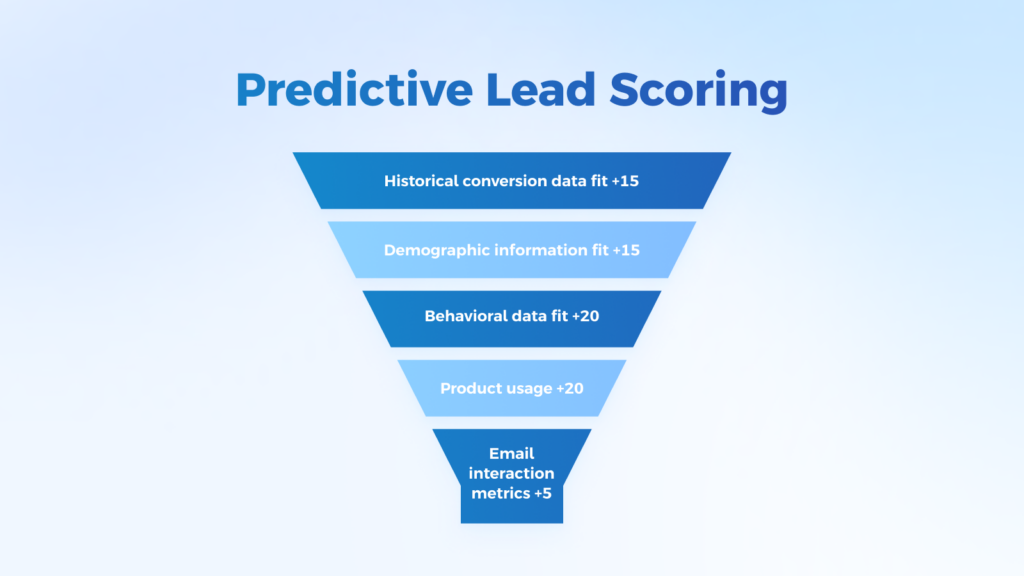
PART 1: FUNDAMENTALS AND IMPLEMENTATION
Introduction to Lead Scoring in Digital Marketing
Lead scoring has emerged as a critical component of modern marketing strategies, particularly as businesses face increasing pressure to efficiently convert prospects into customers. At its core, lead scoring is a systematic methodology that assigns numerical values to potential customers based on their likelihood to convert, enabling sales teams to prioritize their efforts on high-value prospects.
According to HubSpot’s 2024 State of Marketing Report, approximately 50% of marketers prioritize lead generation in their campaigns, while a staggering 65% cite generating traffic and leads as their biggest marketing challenge. This emphasizes the growing importance of implementing effective lead scoring systems to address these challenges.
The evolution of lead scoring has been remarkable, transitioning from simple manual frameworks to sophisticated data-driven models. In its earliest form, lead scoring relied heavily on subjective assessments by sales representatives. Today, it incorporates complex algorithms and artificial intelligence to predict prospect behaviour with unprecedented accuracy.
As we move into 2025, lead scoring continues to evolve, increasingly embracing predictive elements that leverage machine learning to forecast conversion probabilities. These advanced systems analyze vast datasets to identify patterns that human analysts might miss, dramatically improving lead qualification efficiency.
In this comprehensive guide, we’ll explore the fundamentals of lead scoring, outline frameworks for implementation, discuss data-driven models, and introduce the power of predictive scoring technologies reshaping the marketing landscape.
Understanding Lead Scoring Fundamentals
Lead scoring represents the systematic process of ranking prospects according to their perceived value to your organization. By assigning numerical values to various actions, demographic attributes, and engagement metrics, businesses can quantifiably assess which leads are most likely to convert into paying customers.
Why Lead Scoring Matters
In today’s competitive business environment, resources are finite and attention must be strategically allocated. Lead scoring enables marketing and sales teams to focus their efforts on prospects with the highest conversion potential, thereby:
- Increasing sales efficiency by prioritizing hot leads
- Reducing wasted efforts on unqualified prospects
- Improving conversion rates through targeted engagement
- Enhancing collaboration between marketing and sales departments
- Providing data-driven insights for strategic decision-making
Traditional vs. Modern Approaches to Lead Qualification
Traditional Lead Scoring:
- Heavily reliant on demographic data
- Based primarily on subjective criteria
- Manually implemented and maintained
- Static scoring frameworks that rarely adapt
- Limited by human bias and observation capabilities
Modern Lead Scoring:
- Incorporates behavioral signals and engagement patterns
- Uses data-driven, objective criteria
- Automated through sophisticated platforms
- Dynamic frameworks that continuously evolve
- Enhanced by artificial intelligence and machine learning.
Key Components of an Effective Lead Scoring System
An effective lead scoring model typically includes:
- Explicit Data: Information directly provided by prospects (demographics, firmographics)
- Implicit Data: Information gathered through observation of prospect behavior
- Negative Scoring: Deductions for characteristics that indicate poor fit
- Temporal Elements: Scoring adjustments based on recency and frequency
- Threshold Definitions: Clear parameters for lead qualification stages
Benefits of Implementation
When properly implemented, lead scoring delivers substantial benefits:
| Benefit | Impact |
|---|---|
| Increased Sales Productivity | 30-40% improvement in resource allocation |
| Higher Conversion Rates | 15-25% lift in prospect-to-customer conversions |
| Reduced Sales Cycle | 20% decrease in time from lead to close |
| Improved Marketing ROI | 35% better return on marketing investments |
| Better Sales-Marketing Alignment | 70% reduction in interdepartmental conflicts |
Common Challenges
Despite its advantages, businesses often encounter challenges when implementing lead scoring:
- Data quality issues and incomplete information
- Difficulty in establishing appropriate scoring criteria
- Resistance to adoption from sales teams
- Complexity in measuring and attributing success
- Integration difficulties with existing systems.
Building an Effective Lead Scoring Framework
Creating a robust lead scoring framework requires careful planning and strategic implementation. The foundation of any successful model begins with developing a precise ideal customer profile (ICP) that serves as the benchmark against which all leads are measured.
Creating Your Ideal Customer Profile
Your ICP should be built from comprehensive analysis of your most successful existing customers. Consider:
- Which customers have the highest lifetime value?
- Which customers experience the shortest sales cycles?
- What common characteristics do your best customers share?
- Which customers are least likely to churn?
By answering these questions through data analysis, you can establish a clear profile that guides your scoring criteria.
Demographic and Firmographic Scoring Criteria
Demographic criteria focus on individual characteristics:
- Job title/role (decision-maker positions receive higher scores)
- Department alignment with your solution
- Career seniority and decision-making authority
- Professional background and expertise
Firmographic criteria evaluate organizational attributes:
- Company size (employees and revenue)
- Industry vertical and sector
- Geographic location and market presence
- Growth trajectory and business maturity
- Annual budget allocation for relevant solutions
Behavioral Scoring Metrics That Indicate Interest
Behavioral metrics often provide stronger signals of purchase intent than demographic data:
🔍 Website Behavior:
- Page visits to pricing or product pages (+10-15 points)
- Time spent on high-intent pages (+5 points)
- Multiple return visits within short timeframes (+15 points)
- Viewing technical documentation or case studies (+20 points)
📱 Content Engagement:
- Bottom-of-funnel content downloads (+25 points)
- Webinar attendance (+20 points)
- Blog consumption patterns (+5-10 points)
- Video completion rates (+15 points)
Engagement Scoring Parameters Across Channels
An effective scoring model tracks engagement across multiple touchpoints:
- Email interactions: Opens (+2), clicks (+5), multiple opens (+10), forwarding (+15)
- Social media engagement: Follows (+3), shares (+7), comments (+10)
- Event participation: Registration (+10), attendance (+15), active participation (+25)
- Sales interactions: Meeting requests (+30), demo attendance (+35), proposal review (+40)
Negative Scoring Elements
Equally important to identifying good fits is recognizing poor-fit prospects through negative scoring:
- Job titles that indicate non-decision makers (e.g., “student” or certain entry-level positions)
- Missing key data points such as phone numbers or company information
- Use of personal email domains for business inquiries
- Geographic locations outside your service area
- Competitors exploring your content.
Collaboration Between Sales and Marketing Teams
Effective lead scoring requires alignment between sales and marketing:
- Joint development: Both teams should contribute to scoring criteria
- Regular review meetings: Schedule monthly assessments of scoring effectiveness
- Feedback loops: Create formal channels for sales to provide input on lead quality
- Shared metrics: Establish common KPIs for evaluating success
- Clear handoff protocols: Define precisely when and how leads transition from marketing to sales
Implementing Data-Driven Lead Scoring Models
Successful implementation of data-driven lead scoring requires seamless integration with existing marketing and CRM systems. This integration ensures that all customer interactions are captured, scored, and acted upon in a coordinated manner.
Integration with Existing Marketing Systems and CRM
The effectiveness of your lead scoring model depends heavily on how well it connects with your technology stack:
- CRM Integration: Ensures real-time score updates based on sales interactions
- Marketing Automation: Triggers appropriate nurture campaigns based on score thresholds
- Website Analytics: Captures behavioral data for scoring algorithms
- Social Media Platforms: Tracks engagement across social channels
- Email Marketing Systems: Monitors email interactions for score adjustments
As noted by industry experts, “CRM integration allows for better lead nurturing and follow-up. Sales representatives can leverage the lead scoring data to tailor their communications and prioritize their outreach efforts.“
Qualifying Leads: MQLs vs. SQLs
Understanding the distinction between Marketing Qualified Leads (MQLs) and Sales Qualified Leads (SQLs) is crucial:
Marketing Qualified Leads (MQLs):
- Have reached a predefined scoring threshold
- Demonstrated sufficient engagement to warrant sales attention
- May still require additional nurturing
Sales Qualified Leads (SQLs):
- Verified by sales as legitimate opportunities
- Confirmed to have budget, authority, need, and timeline
- Ready for direct sales engagement and pipeline inclusion
Setting Up Score Thresholds and Triggers
Determining when a lead is ready for sales outreach requires careful threshold definition:
- Analyze historical data: Examine scores of previously converted leads
- Set MQL thresholds: Typically 65-75 points on a 100-point scale
- Establish trigger events: Specific high-value actions that immediately qualify leads
- Create score decay rules: Point reductions for inactivity over time
- Implement “cooling off” periods: As one expert notes, “When you’re returned to marketing, you can’t return to sales for 120 days,” preventing premature requalification.
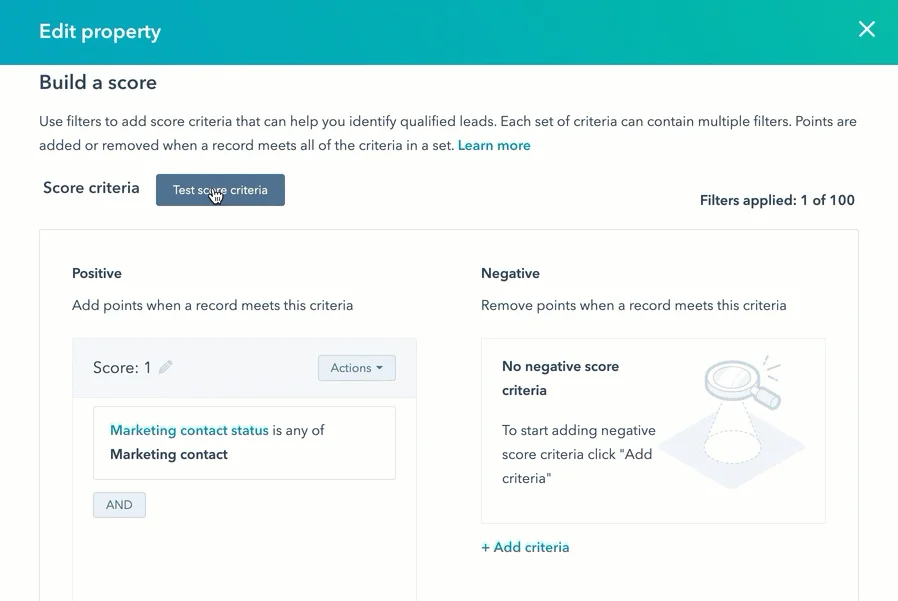
Data Sources for Effective Lead Scoring
Comprehensive lead scoring draws from multiple data sources:
- First-party data: CRM records, website analytics, email engagement
- Second-party data: Partner networks, channel interactions
- Third-party data: Industry databases, social media insights, technographic profiles
- Predictive analytics: AI-generated insights from pattern recognition
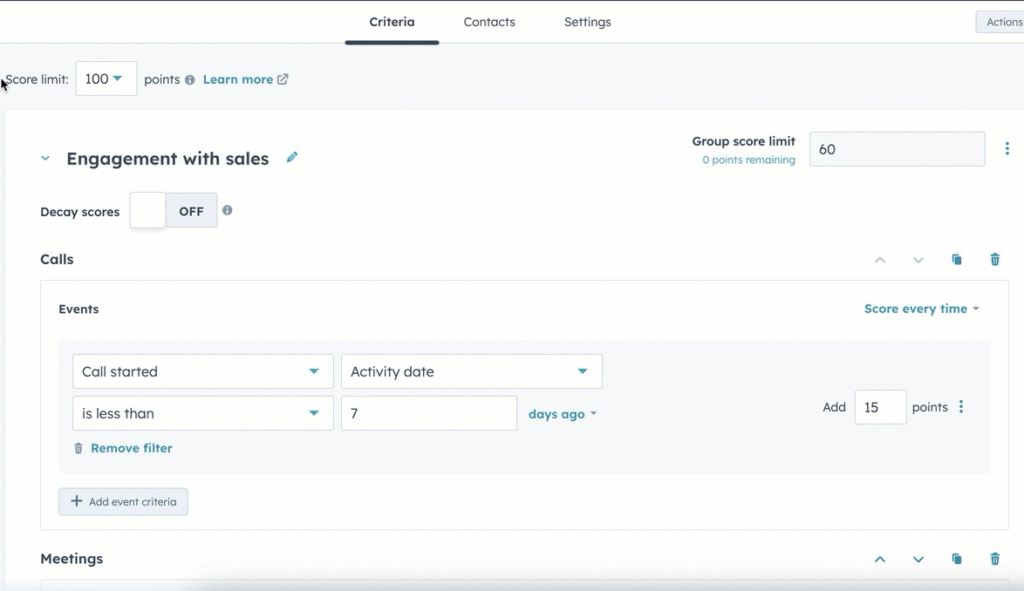
Automation Technologies That Support Lead Scoring
Modern lead scoring relies on sophisticated automation tools:
- Marketing automation platforms: HubSpot, Marketo, Pardot
- Dedicated scoring solutions: Leadspace, 6sense, Lattice Engines
- AI-powered analytics: Continuously refine scoring models based on results
- Integration platforms: Zapier, Integromat for connecting disparate systems
Implementation Timeline and Resource Allocation
A typical lead scoring implementation follows this timeline:
| Phase | Duration | Key Activities |
|---|---|---|
| Planning | 4-6 weeks | Define ICP, establish scoring criteria, secure stakeholder buy-in |
| Development | 2-4 weeks | Build scoring model, configure automation, integrate systems |
| Testing | 2 weeks | Validate scoring logic, test automation workflows |
| Rollout | 1-2 weeks | Train teams, implement processes, begin scoring |
| Optimization | Ongoing | Analyze performance, refine criteria, adjust thresholds |
Introduction to Predictive Lead Scoring
Predictive lead scoring represents the next evolutionary step in lead qualification, leveraging advanced algorithms and machine learning to forecast conversion likelihood with unprecedented accuracy. Unlike traditional models that rely on manually defined criteria, predictive scoring systems identify patterns and correlations that human analysts might never discover.
How Predictive Scoring Differs from Traditional Methods
Traditional lead scoring models operate on explicitly defined rules based on assumed relationships between attributes and conversion likelihood. In contrast, predictive models:
- Use machine learning algorithms that discover non-obvious correlations in data
- Continuously improve as they process more conversion data
- Identify complex patterns across thousands of potential variables
- Adapt automatically to changing market conditions
- Operate at scale across vast datasets
As industry experts note, “Unlike traditional lead scoring, predictive lead scoring isn’t subjective. Previously, sales executives would determine the most important factors influencing a sale and use that to score prospects. However, leaving it up to sales executives means being vulnerable to human error.”
Example of lead scoring in HubSpot
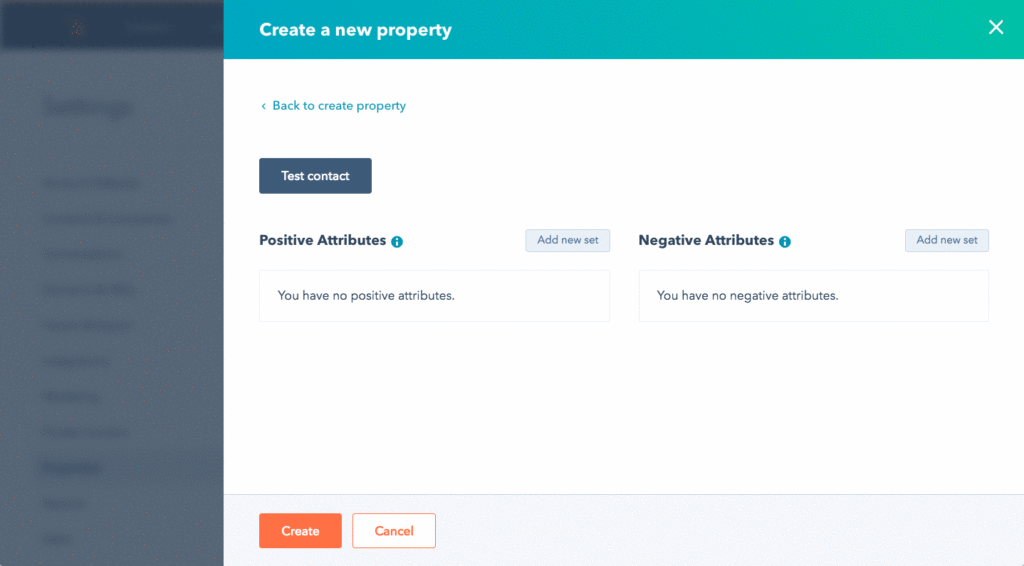
The Shift from Manual to AI-Powered Scoring Systems
The evolution to AI-powered systems has been driven by:
- Data volume explosion: Modern businesses generate too much data for manual analysis
- Computing power advances: Cloud infrastructure enables complex calculations at reasonable cost
- Algorithm improvements: Machine learning techniques have become increasingly sophisticated
- Integration capabilities: APIs allow seamless connection of multiple data sources
- Competitive pressure: Early adopters gained significant advantages, pushing others to follow
Key Advantages of Predictive Lead Scoring
Predictive scoring delivers substantial benefits over traditional approaches:
- Generates trackable metrics based on large datasets
- Enables better targeted campaigns to maximize marketing ROI
- Improves sales productivity by focusing resources on better-qualified leads
- Increases conversion rates through more accurate qualification
- Identifies patterns and connections that might otherwise be missed.
Consider this real-world implementation from a B2B software company:
![Lead Conversion Rate Comparison Chart]
This enterprise software provider implemented predictive scoring and saw:
- 3.2x higher conversion rates among top-scored leads.
- 67% reduction in sales cycle length.
- 42% increase in average deal size.
- 28% decrease in customer acquisition costs.
Data Requirements for Effective Predictive Models
Predictive lead scoring systems require substantial data to function effectively:
Minimum Requirements:
- 12+ months of historical conversion data
- 1,000+ closed-won opportunities
- Comprehensive tracking of engagement metrics
- Clean, consistent CRM data
- Integrations with key marketing platforms
As one industry source cautions, “Predictive lead scoring is only as effective and valuable as the data you have. To get accurate and useful insights about your leads, you’re going to need a lot of accurate and organized data and the necessary technology to manage it.”
Common Predictive Scoring Applications in Business
Businesses are applying predictive scoring across various scenarios:
- Conversion likelihood prediction: Identifying prospects most likely to purchase.
- Purchase timeline forecasting: Predicting when prospects will be ready to buy.
- Customer lifetime value projection: Estimating long-term value potential.
- Churn risk identification: Flagging customers likely to discontinue service.
- Cross-sell/upsell opportunity detection: Highlighting expansion possibilities.
How Predictive Analytics Identifies At-Risk Customers
Predictive analytics models can analyse vast amounts of customer data to identify patterns that indicate churn risk. These models can consider factors such as purchase history, engagement levels, and customer feedback to predict which customers are most likely to churn. For example, a study by Gartner found that predictive models can accurately identify at-risk customers with up to 80% accuracy.
Case Study: B2B SaaS Company Implementation
A mid-sized B2B SaaS provider implemented predictive lead scoring with remarkable results:
- Before implementation: 12% lead-to-opportunity conversion rate.
- After implementation: 28% conversion rate for top-scored leads.
- Resource allocation improvement: 40% reduction in wasted sales efforts.
- Revenue impact: 32% year-over-year growth.
As we conclude Part 1 of our exploration of lead scoring, it’s clear that the transition from traditional to predictive approaches represents a significant advancement in marketing technology. In Part 2, we’ll delve deeper into advanced optimization techniques, churn analysis, and the future of lead scoring in email marketing automation.
PART 2: ADVANCED STRATEGIES AND FUTURE TRENDS
Advanced Lead Scoring Optimization Techniques
Lead scoring has evolved beyond basic demographic and firmographic data. Modern B2B companies leverage account-based scoring to prioritize high-value accounts. For example, Salesforce uses this approach to align marketing and sales efforts, focusing on enterprise accounts with complex buying committees. By scoring entire accounts (not just leads), businesses identify decision-makers, budget holders, and influencers within target organizations.
Predictive scoring elements now include:
- Purchase likelihood prediction: Machine learning models analyze historical data to forecast which leads are most likely to convert.
- Expected sales cycle length: Shorter cycles are prioritized using intent signals like content downloads or webinar attendance.
- Potential customer lifetime value (CLV): Tools like HubSpot score leads based on projected revenue, retention, and upsell potential.
- Churn risk factor identification: Predictive models flag at-risk customers using engagement drops or support ticket trends.
- Dynamic score adjustments: Scores update in real-time based on market shifts (e.g., economic downturns) or competitor activity.
Multi-touch attribution ensures credit is assigned to every touchpoint. For instance, a lead interacting with a webinar, email, and case study receives a holistic score reflecting their journey.
Impact of Account-Based Scoring on Pipeline Growth
Churn Analysis and Prevention
Churn prevention starts with identifying churn indicators embedded in lead scoring models. Behavioral red flags include reduced email opens, declining website visits, or unresolved support tickets.
Early warning systems use predictive analytics to trigger alerts. For example, Netflix analyses viewing patterns to predict cancellations and offers personalized retention content.
Proactive retention strategies based on scoring data:
- Offer discounts or exclusive content to high-risk accounts.
- Assign dedicated account managers to high-CLV customers.
- Re-engage dormant leads with targeted email sequences.
Measuring success: Track metrics like churn rate reduction, retention cost per customer, and upsell rates post-intervention.
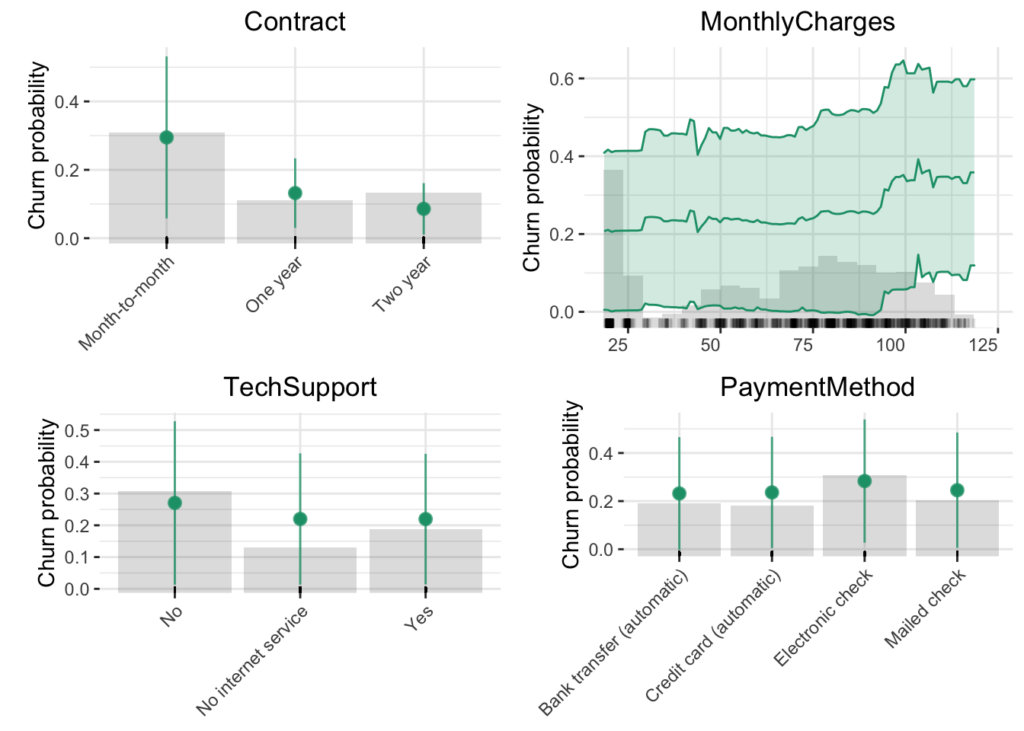
Measuring Lead Scoring Success
KPIs to monitor:
- Conversion rates by score range: High-scoring leads should convert 2–3x faster.
- Sales cycle length impact: Optimized scoring reduces cycle time by 15–30%.
- Customer acquisition costs (CAC): Efficient scoring lowers CAC by prioritizing quality leads.
- Revenue per lead score bracket: Compare revenue contribution across score tiers.
Optimization metrics:
- Score distribution (e.g., 20% of leads in “hot” tier).
- Score-to-close rate correlation (e.g., 80% of “hot” leads close).
- Time to qualification and resource allocation efficiency.
| Metric | Pre-Scoring | Post-Scoring |
|---|---|---|
| Conversion Rate | 12% | 28% |
| Avg. Sales Cycle | 90 days | 60 days |
What are the best practices for dynamic score adjustment based on market conditions?
Dynamic score adjustment based on market conditions is a crucial aspect of effective lead scoring. Here are some best practices to optimize this process:
- Continuous Monitoring: Regularly monitor market trends, competitor pricing, and internal inventory to stay informed about changing conditions. This allows for timely adjustments to your scoring model.
- Real-Time Data Analysis: Utilize advanced analytics tools to gather and analyze real-time data on customer behavior, market dynamics, and competitor strategies. This enables quick and informed decision-making for score adjustments.
- Segmentation and Personalization: Divide your customer base into segments based on demographics, behavior, or preferences. Tailor your scoring strategies for each segment to account for varying market sensitivities.
- Establish Clear Thresholds: Set predetermined thresholds for key performance indicators (KPIs) such as volatility, peak-to-trough returns, and Sharpe ratios. When these thresholds are breached, it signals the need for score adjustments.
- Regular Review and Update: Conduct periodic reviews of your scoring model, ideally on a quarterly basis or more frequently in rapidly changing markets. Update your demographic scoring criteria as market conditions evolve.
- Leverage Machine Learning: Implement machine learning algorithms to automatically adjust scores based on real-time interactions and changing market dynamics. This helps in maintaining the accuracy and relevance of your scoring model.
- Benchmark Against Industry Standards: Compare your scoring model against industry benchmarks to ensure it remains competitive and aligned with sector-specific trends.
- Adapt Scoring Scale: Adjust your scoring scale to reflect the relative importance of different factors based on current market conditions. For example, during economic downturns, financial stability might carry more weight in B2B lead scoring.
- Incorporate Market Indicators: Include relevant market indicators in your scoring model, such as industry growth rates, economic indices, or sector-specific metrics, to account for broader market trends.
- Cross-Functional Collaboration: Ensure ongoing communication between sales, marketing, and data analysis teams to incorporate diverse perspectives on market changes and their impact on lead quality.
By implementing these practices, businesses can maintain a dynamic and responsive lead scoring system that adapts to changing market conditions, ultimately improving sales results and resource allocation efficiency.
What tools or software are best for implementing lead scoring?
Top Lead Scoring Tools for 2025
1. HubSpot
- Features: Predictive lead scoring powered by AI, CRM integration, marketing automation, and customizable scoring criteria.
- Best For: Mid-size to large businesses looking for an all-in-one platform.
- Pros: User-friendly interface, seamless integration with other tools, and robust customer support.
- Pricing: Free plan available; advanced features start at $800/month.
- Use Case: Ideal for aligning marketing and sales teams with a unified lead management approach.
2. Salesforce
- Features: AI-powered predictive lead scoring, tailored scoring models, and detailed analytics.
- Best For: Large organizations with complex sales processes.
- Pros: Highly customizable and integrates well with other Salesforce products.
- Pricing: Starts at $24/user/month; advanced plans reach $165/user/month.
- Use Case: Perfect for enterprises needing advanced CRM capabilities combined with lead scoring.
3. Zapier
- Features: Workflow automation between 3,000+ apps to streamline lead scoring processes.
- Best For: Businesses needing app integrations without coding.
- Pros: Simple setup and wide app compatibility.
- Cons: Limited native lead scoring features; relies on third-party tools for advanced scoring.
- Pricing: Free plan available; paid plans start at $19.99/month.
- Use Case: Best suited for automating manual tasks in small to mid-size businesses.
4. LeadSquared
- Features: AI-powered lead scoring, real-time tracking, and customizable workflows.
- Best For: Sales teams focused on high-volume leads.
- Pros: User-friendly interface and strong customer support.
- Pricing: Starts at $29.95/user/month.
- Use Case: Designed for businesses that need robust lead management combined with marketing automation.
5. Breadcrumbs
- Features: Predictive lead scoring based on product usage data, seamless integration with analytics tools like Mixpanel and Pendo.
- Best For: SaaS companies looking to prioritize leads based on engagement metrics.
- Pros: Quick setup and accurate predictive models.
- Pricing: Free plan available; Pro starts at $400/month.
- Use Case: Ideal for SaaS businesses focusing on product-led growth strategies.
6. ActiveCampaign
- Features: Integrated email marketing and CRM with customizable lead scoring rules.
- Best For: Email marketers and small businesses.
- Pros: Affordable pricing and excellent email automation features.
- Pricing: Starts at $19/month.
- Use Case: Perfect for small businesses leveraging email campaigns to nurture leads.
7. Leadfeeder
- Features: Website visitor tracking integrated with Google Analytics, real-time lead alerts, and detailed insights.
- Best For: Businesses focused on website-driven lead generation.
- Pros: Easy integration and real-time notifications.
- Pricing: Free plan available; premium plans start at $79/month.
- Use Case: Ideal for tracking website visitors and prioritizing inbound leads.
Comparison Table of Lead Scoring Tools
| Tool | Starting Price | Key Features | Best For |
|---|---|---|---|
| HubSpot | Free | Predictive AI scoring, CRM integration | Mid-size to large businesses |
| Salesforce | $24/user/month | AI-powered scoring, advanced analytics | Large organizations |
| Zapier | Free | Workflow automation | Integration needs |
| LeadSquared | $29.95/user/month | Real-time tracking, AI scoring | High-volume sales teams |
| Breadcrumbs | Free | Predictive models using product data | SaaS companies |
Real-Time Example: HubSpot in Action
A mid-sized SaaS company implemented HubSpot’s predictive lead scoring to align its sales and marketing teams. Within six months:
- Conversion rates increased by 30%.
- Sales cycle length decreased by 20%.
- Marketing ROI improved by 40%.
Recommended Tools Based on Business Needs
- Small Businesses: ActiveCampaign or Zapier for affordability and ease of use.
- Mid-Sized Companies: HubSpot or LeadSquared for scalability and robust features.
- Enterprises: Salesforce, Eloqua or Breadcrumbs for advanced customization and predictive capabilities.
These tools can help streamline your lead management processes while improving sales efficiency and conversion rates.
Which lead scoring tool offers the best integration capabilities?
Which lead scoring tool offers the best integration capabilities and best customization options?
Integration Champions: Connecting Your Marketing Ecosystem
When it comes to integration capabilities, Zapier stands out as the clear frontrunner. However, other platforms like HubSpot, Salesforce, Eloqua, and Microsoft Dynamics 365 also offer impressive integration features. Let’s break down what each tool brings to the table:
Zapier: The Integration Powerhouse
Zapier’s strength lies in its ability to connect over 3,000 apps, making it the Swiss Army knife of integration tools. This versatility allows businesses to create custom workflows that seamlessly connect their lead scoring process with virtually any other tool in their tech stack.
Key Integration Features:
- Connect with 3,000+ apps
- Create multi-step workflows (Zaps)
- Real-time data syncing
- Custom API integrations
HubSpot: All-in-One Marketing Hub
HubSpot offers a comprehensive suite of marketing, sales, and service tools, with lead scoring deeply integrated into its ecosystem. While not as extensive as Zapier, HubSpot’s native integrations are robust and tailored for marketing and sales needs.
Key Integration Features:
- Native integrations with popular CRM and marketing tools
- HubSpot App Marketplace for additional integrations
- API access for custom integrations
- Seamless data flow between marketing, sales, and service hubs
Salesforce: Enterprise-Grade Integration
Salesforce provides enterprise-level integration capabilities, particularly strong within its own ecosystem of products. Its AppExchange offers a vast array of pre-built integrations, while its robust API allows for custom connections.
Key Integration Features:
- Extensive AppExchange marketplace
- Mulesoft integration platform for complex enterprise needs
- Strong API for custom integrations
- Native integration with marketing automation tools like Pardot
Eloqua: B2B Marketing Automation Integration
Oracle’s Eloqua focuses on B2B marketing automation and offers strong integration capabilities, especially within the Oracle ecosystem and with other enterprise-level tools.
Key Integration Features:
- Native integration with Oracle CX suite
- Pre-built connectors for major CRM systems
- Open API for custom integrations
- Integration with data management platforms
Microsoft Dynamics 365: Seamless Microsoft Ecosystem Integration
Microsoft Dynamics 365 shines in its integration with other Microsoft products and services, making it an excellent choice for organizations heavily invested in the Microsoft ecosystem.
Key Integration Features:
- Seamless integration with Office 365 and Azure
- Power Platform for custom app development and integration
- Common Data Service for unified data across Microsoft apps
- Integration with LinkedIn Sales Navigator
Customization Kings: Tailoring Your Lead Scoring Model
While integration is crucial, the ability to customize your lead scoring model to fit your unique business needs is equally important. Let’s examine how our contenders stack up in terms of customization options:
Salesforce: The Customization Champion
Salesforce takes the crown for customization, offering unparalleled flexibility in creating and modifying lead scoring models.
Customization Options:
- Custom fields and objects
- Process Builder for complex scoring rules
- Einstein AI for predictive scoring
- Apex code for advanced customizations
HubSpot: User-Friendly Customization
HubSpot offers a balance between powerful customization and user-friendliness, making it accessible for businesses of all sizes.
Customization Options:
- Drag-and-drop score property creator
- Customizable scoring criteria based on actions and attributes
- Predictive lead scoring with machine learning
- Custom reporting and dashboards
Eloqua: Advanced B2B Customization
Eloqua provides deep customization options tailored for B2B marketing needs.
Customization Options:
- Custom scoring models based on profile fit and engagement
- Advanced lead qualification frameworks
- Customizable lead nurturing programs
- Granular segmentation options
Microsoft Dynamics 365: Flexible Scoring with Power Platform
Microsoft Dynamics 365 leverages the Power Platform to offer flexible customization options.
Customization Options:
- Custom entities and fields for scoring
- Power Automate for complex scoring workflows
- AI Builder for predictive scoring models
- Custom dashboards and reports with Power BI
Zapier: Workflow-Based Customization
While Zapier isn’t a dedicated lead scoring tool, its workflow automation capabilities allow for creative customization of scoring processes.
Customization Options:
- Create custom scoring workflows across multiple apps
- Use multi-step Zaps for complex scoring rules
- Leverage webhooks for real-time score updates
- Integrate with custom APIs for unique scoring needs
Comparison Chart: Integration and Customization Capabilities
| Tool | Integration Breadth | Native Integrations | API Access | Customization Depth | User-Friendliness |
|---|---|---|---|---|---|
| Zapier | ★★★★★ | ★★★★☆ | ★★★★☆ | ★★★☆☆ | ★★★★★ |
| HubSpot | ★★★★☆ | ★★★★★ | ★★★★☆ | ★★★★☆ | ★★★★★ |
| Salesforce | ★★★★☆ | ★★★★★ | ★★★★★ | ★★★★★ | ★★★☆☆ |
| Eloqua | ★★★☆☆ | ★★★★☆ | ★★★★☆ | ★★★★☆ | ★★★☆☆ |
| Microsoft Dynamics 365 | ★★★★☆ | ★★★★★ | ★★★★☆ | ★★★★☆ | ★★☆☆☆ |
Comparison Chart: Integration and Customization Capabilities
| Tool | Integration Breadth (Number of Apps) | Native Integrations (Key Platforms) | API Access (Custom Integration Options) | Customization Depth (Scoring Model Complexity) | User-Friendliness (Ease of Setup) |
|---|---|---|---|---|---|
| Zapier | 3,000+ | Limited native integrations, but vast app library | High (custom API connections) | Medium (workflow-based scoring) | Very High (easy setup) |
| HubSpot | 200+ | Strong native integrations (CRM, marketing automation) | High (API access for custom integrations) | High (predictive scoring models) | Very High (user-friendly interface) |
| Salesforce | 3,000+ (via AppExchange) | Extensive native integrations (Pardot, Mulesoft) | Very High (robust API for customizations) | Very High (complex scoring models) | Medium (steep learning curve) |
| Eloqua | 100+ | Strong native integrations (Oracle CX suite) | High (API for custom integrations) | High (advanced B2B scoring models) | Medium (requires technical expertise) |
| Microsoft Dynamics 365 | 100+ (via Power Platform) | Seamless integration with Microsoft products | High (API access for custom integrations) | High (flexible scoring models) | Very Low (intuitive interface, but requires Microsoft ecosystem familiarity) too much constraints. |
Making the Right Choice for Your Business
Selecting the best lead scoring tool with top integration and customization capabilities depends on your specific business needs, existing tech stack, and team expertise. Here are some key considerations:
- For businesses using a wide variety of tools and seeking maximum flexibility, Zapier’s unparalleled integration capabilities make it an excellent choice.
- Organizations looking for an all-in-one marketing solution with strong lead scoring features should consider HubSpot.
- Enterprise-level businesses with complex needs and resources for customization will find Salesforce’s extensive capabilities appealing.
- B2B companies focused on sophisticated marketing automation may lean towards Eloqua.
- Those heavily invested in the Microsoft ecosystem will find Microsoft Dynamics 365 a natural fit.
Ultimately, the best tool is one that seamlessly integrates with your existing workflows while offering the customization options needed to create a lead scoring model that accurately reflects your unique business processes and goals.
As we move further into 2025, these tools continue to evolve, incorporating more AI and machine learning capabilities to enhance both integration and customization options. Whichever tool you choose, remember that the key to successful lead scoring lies not just in the software itself, but in how well you tailor it to your specific needs and continuously refine your approach based on data and results.
The Future of Lead Scoring in Email Marketing Automation
AI-powered personalization tailors email content dynamically. Tools like Mailchimp adjust subject lines based on lead scores, boosting open rates by 20–40%.
Real-time scoring updates factor in email interactions (e.g., link clicks, downloads) to prioritize follow-ups. Predictive send-time optimization increases engagement by 35%, as seen in SendGrid’s case studies.
Emerging trends:
- Social signals (e.g., LinkedIn activity) integrated with email behavior.
- Privacy-first scoring using zero-party data (e.g., preference centers).
- Generative AI for hyper-personalized content recommendations.
Best Practices for Sustainable Lead Scoring Success
- Review criteria quarterly: Align with shifting buyer behaviors.
- Align sales and marketing: Jointly define “sales-ready” thresholds.
- Integrate CRM and MAPs: Sync Salesforce with HubSpot for unified data.
- Audit data quality: Remove outdated or duplicate entries monthly.
- A/B test scoring models: Compare performance of predictive vs. manual rules.
Training: Conduct workshops to ensure team adoption.
FAQ Section: Common Questions About Lead Scoring
Q: What is the difference between traditional and predictive lead scoring?
A: Traditional lead scoring relies on manually set rules based on demographic and behavioral data, while predictive lead scoring uses machine learning algorithms to analyze historical data and predict future outcomes.
Q: How accurate is predictive lead scoring compared to manual methods?
A: Predictive lead scoring tends to be more accurate as it can process vast amounts of data and identify complex patterns that might not be apparent to human analysts. However, its accuracy depends on the quality and quantity of historical data available.
Q: How often should I update my lead scoring model?
A: It’s recommended to review and update your lead scoring model at least quarterly. However, for businesses in rapidly changing markets, more frequent updates may be necessary.
Q: Can lead scoring help reduce customer churn?
A: Yes, lead scoring can help identify at-risk customers by flagging engagement patterns that typically precede churn, allowing for proactive retention efforts.
Q: What data points are most important for effective lead scoring?
A: Important data points include demographic information, engagement metrics (e.g., email opens, website visits), content interactions, and purchase history. The specific importance of each data point can vary depending on your business model and target audience.
Conclusion and Next Steps
Summary: Advanced lead scoring blends predictive analytics, multi-touch attribution, and real-time adjustments. Prioritize churn prevention and measure ROI through KPIs like CAC and CLV.
Actionable recommendations:
- Audit your current scoring model for gaps.
- Pilot AI-driven tools for predictive insights.
- Train teams on interpreting dynamic scores.
Implementation roadmap:
- Month 1: Data cleanup and tool integration.
- Month 2: Pilot predictive scoring for 10% of leads.
- Month 3: Full rollout and KPI tracking.
Resources: Explore HubSpot’s certification courses or Gartner’s analytics reports.
LSI/NLP Keywords: Lead qualification process, Marketing automation platforms, Behavioural scoring metrics, Predictive analytics in marketing, Customer lifetime value prediction, B2B lead scoring models, Email engagement metrics.
References
- HubSpot’s Marketing Automation Software Page : Explore all-in-one marketing automation solutions for lead scoring.
- Gartner’s Latest Report on Predictive Analytics : Access industry research on predictive analytics effectiveness.
- MarTech Today’s Guide to Marketing Automation Tools : Compare comprehensive marketing automation platforms.

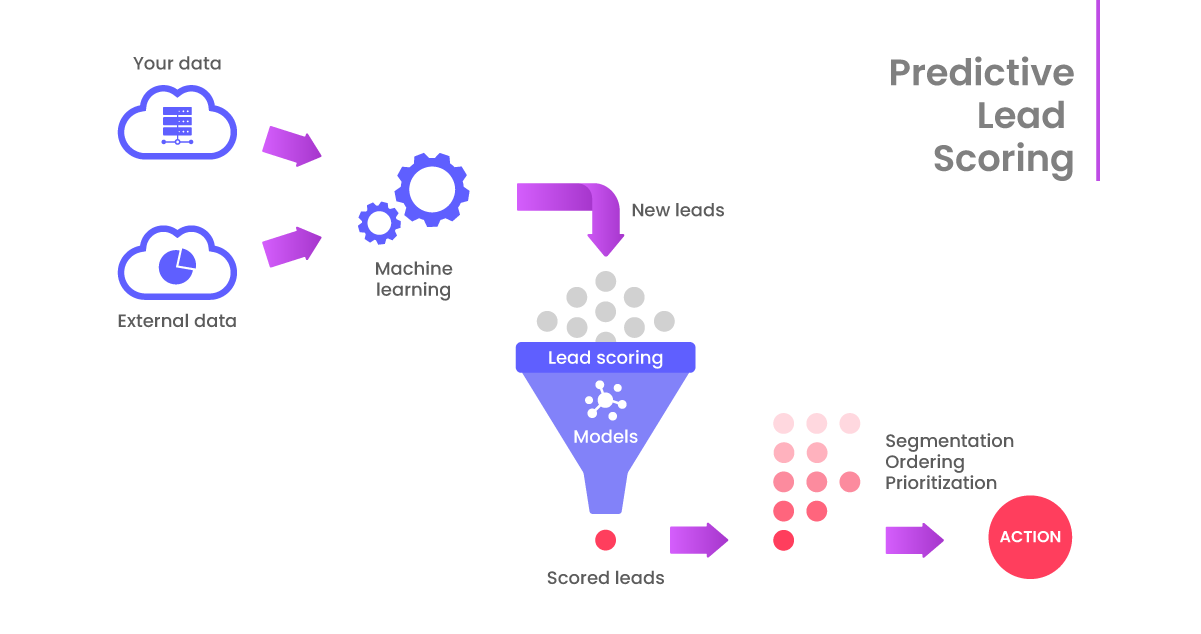
Leave a Reply
You must be logged in to post a comment.